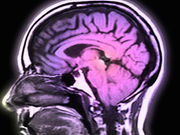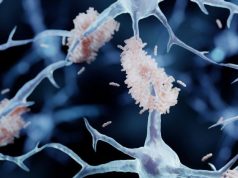Researchers find inflammation 32 percent higher in six brain regions that play a role in OCD
FRIDAY, June 23, 2017 (HealthDay News) — Patients with obsessive-compulsive disorder (OCD) have high levels of brain inflammation, according to a study published online June 21 in JAMA Psychiatry.
Jeffrey H. Meyer, M.D., Ph.D., head of the Neurochemical Imaging Program in Mood and Anxiety Disorders at the Centre for Addiction and Mental Health in Toronto, and colleagues compared brain imaging for 20 OCD patients and a control group of 20 people without the condition. The participants were all nonsmokers, drug and medication free, and otherwise healthy.
The researchers found that in the OCD patients, inflammation was 32 percent higher in six brain regions that play a role in OCD: the dorsal caudate, orbitofrontal cortex, thalamus, ventral striatum, dorsal putamen, and anterior cingulate cortex. In other gray matter regions, slightly lower elevations in translocator protein distribution volume were noted.
“The regional distribution of elevated translocator protein distribution volume argues that the autoimmune/neuroinflammatory theories of OCD should extend beyond the basal ganglia to include the cortico-striato-thalamo-cortical circuit,” the authors write. “Immunomodulatory therapies should be investigated in adult OCD, rather than solely childhood OCD, particularly in cases with prominent distress when preventing compulsions.”
Copyright © 2017 HealthDay. All rights reserved.








